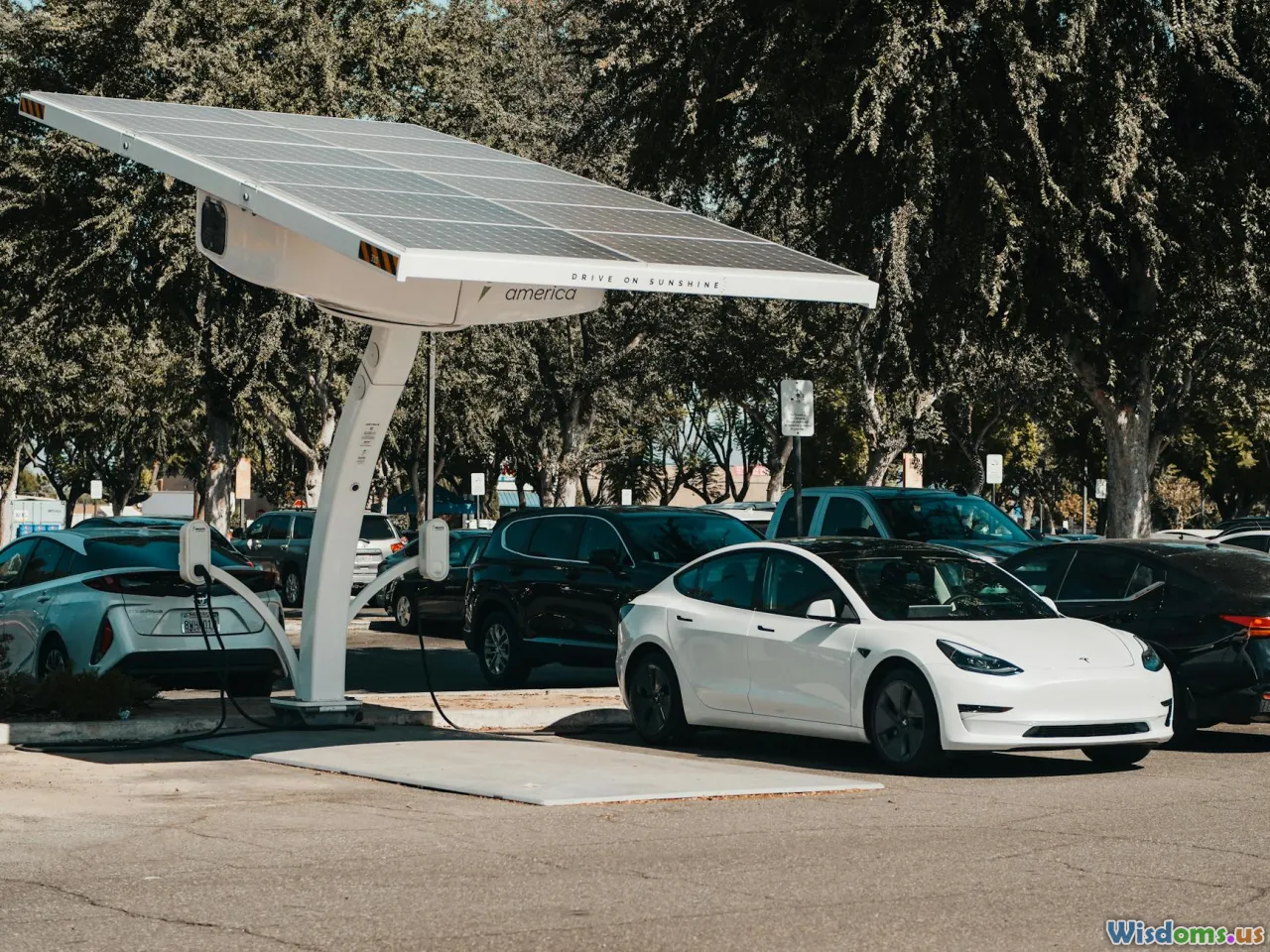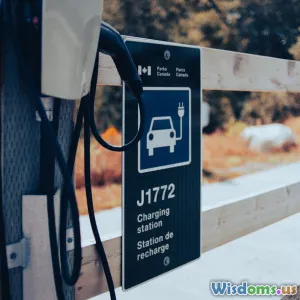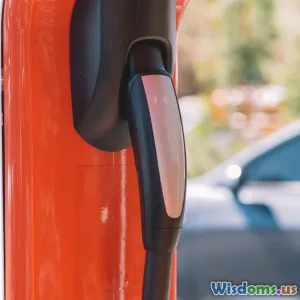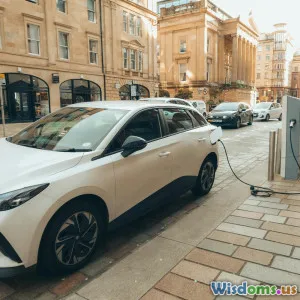
Electric Car Range Anxiety: Is the Fear Still Justified in 2024
9 min read Explore whether electric car range anxiety remains a valid concern in 2024 amid advancements in battery tech and charging infrastructure. (0 Reviews)
Electric Car Range Anxiety: Is the Fear Still Justified in 2024?
When electric vehicles (EVs) first hit mainstream awareness, one prevailing concern kept many drivers on the sidelines: range anxiety. The fear of running out of battery in the middle of a trip haunted then and now, some still wonder whether that dread is warranted in 2024. With rapid technological advances dramatically extending electric vehicle ranges and building out robust charging networks, has range anxiety finally become an outdated worry—or does it persist beneath the surface?
Understanding Range Anxiety: Origins and Impact
Range anxiety originates from the worry of not having enough charge to reach the destination or a charging station, leading to the risk of being stranded. Unlike traditional internal combustion engine vehicles where refueling is quick and ubiquitous, EVs require more planning around recharge durations and station availability — factors that initially limited appeal.
Early EV models, such as the Nissan Leaf (first generation), offered ranges around 100 miles under ideal conditions, often less in real-world scenarios. For context, a 2011 study from AAA indicated that 3 in 4 Americans drive less than 40 miles daily, but highways and longer journeys were a challenge, fueling skepticism despite urban usage suitability.
2024 Battery Technologies That Are Changing the Game
Longer Range Batteries
Lithium-ion technology remains dominant, but improvements in energy density have pushed EV ranges well beyond early limitations. The Tesla Model S Plaid boasts over 390 miles per full charge, a dramatic leap from the earlier 250 miles attainable a few years ago. Newer models, such as the Lucid Air Dream Edition, claim ranges exceeding 500 miles—a milestone nearly unthinkable in previous EV generations.
Solid-State Batteries on the Horizon
Although still largely in the testing phase, solid-state batteries promise heavier energy storage with faster charging times while improving safety by reducing the risk of thermal runaway. Companies like QuantumScape are racing to commercialize this technology, which could be transformative for range and charging anxiety.
Real-World Usage Data
Recent data from the U.S. Department of Energy’s EV Everywhere Grand Challenge illustrates average daily driving distances well within the capacity of modern EVs. Furthermore, drivers report improved confidence as onboard navigation systems now optimize routes factoring in battery levels and available charging points.
The Expanding Network of Charging Infrastructure
Range anxiety isn’t solely about battery capacity but also accessibility to charging stations. A significant evolution in public and private sectors has occurred in the past five years.
Nationwide Coverage
In the United States, the number of publicly available fast chargers grew from fewer than 5,000 in 2018 to over 50,000 in 2023. The Biden administration’s infrastructure bill earmarked $7.5 billion to develop a national network of 500,000 chargers by 2030, targeting key highways to encourage long-distance travel without the fear of becoming stranded.
Fast Charging Breakthroughs
Fast chargers (DC fast chargers) can recharge vehicle batteries up to 80% within 30 minutes or less. Tesla’s Supercharger network, combined with the rise of ultra-fast chargers at 150–350 kW or higher, dramatically reduces downtime during long trips. This evolution diminishes range anxiety by turning charging into a manageable break rather than an inconvenience.
Innovations in Home Charging
Home charging installation has also become easier and more affordable, reducing reliance on public chargers and ensuring that most EV owners start the day with a “full tank.” Incentives and tax credits further encourage the adoption of Level 2 chargers in residential settings.
Perspectives from EV Users—Do Drivers Still Fear the Range?
According to a recent JD Power EV driver study in early 2024, only 12% of EV owners report range anxiety as a significant issue today, compared to nearly 45% in 2018.
-
Case study: Rachel from Denver, Colorado: She drives a 2023 Ford Mustang Mach-E with a range of 270 miles and reports, "I rarely think twice about range. I charge overnight and plan occasional trips with stops at fast chargers. It’s part of the routine now."
-
Case study: Marcus from New York City: Using a 2024 Nissan Ariya, Marcus enjoys city and occasional interstate trips. He notes, "Charging infrastructure in the city is excellent, and I have access to multiple fast-charging stations. Range anxiety is a distant memory for me."
These insights highlight a broad trend—modern EV users benefit from technology and infrastructure that significantly minimize range-related concerns.
Remaining Challenges and Considerations
While great strides have been made, some obstacles remain:
-
Charging Access in Rural and Underserved Areas: Just as fuel stations are less common in remote regions, EV chargers also face deployment challenges. Drivers in such locales might still experience range concerns.
-
Cold Weather Impact: Battery performance can degrade in cold climates, temporarily reducing range by as much as 20-30%. Manufacturers are addressing this with improved thermal management, but it remains a factor.
-
Vehicle Affordability and Model Availability: Long-range EVs tend to command premium prices, possibly limiting access for budget-conscious consumers.
-
Charging Time Compared to Refueling: Even ultra-fast chargers require more downtime compared to filling a gas tank. Though increasingly efficient, charging speed can translate to planning changes for drivers.
Conclusion: Is Range Anxiety Justified in 2024?
The electric vehicle landscape in 2024 has undergone a remarkable transformation. Battery advances paired with an expanding, faster charging infrastructure have greatly alleviated range anxiety for the majority of potential drivers and current EV owners.
While some edge cases, particularly those in remote or harsh climate regions, continue to pose challenges, the fear of being stranded due to insufficient battery range is far less justified today. As more automakers introduce long-range models, governments invest in infrastructure, and technology progresses toward even faster charging times, range anxiety is evolving from a significant barrier to a manageable consideration.
Ultimately, what once was a major psychological and logistical hurdle is increasingly becoming a relic of the past—encouraging broader EV adoption and paving the road toward a cleaner, more sustainable driving future.
Sources:
- U.S. Department of Energy EV Everywhere Grand Challenge
- JD Power 2024 Electric Vehicle Experience Study
- Tesla Official Range Data
- Nissan Ariya Technical Specifications
- QuantumScape Battery Development Updates
- AAA Daily Driving and Range Analytics Reports
Final thoughts: Considering current trends and technological projections, anyone considering an EV in 2024 should be confident that range anxiety is mostly an outdated concern—not an insurmountable barrier.
Rate the Post
User Reviews
Popular Posts


















